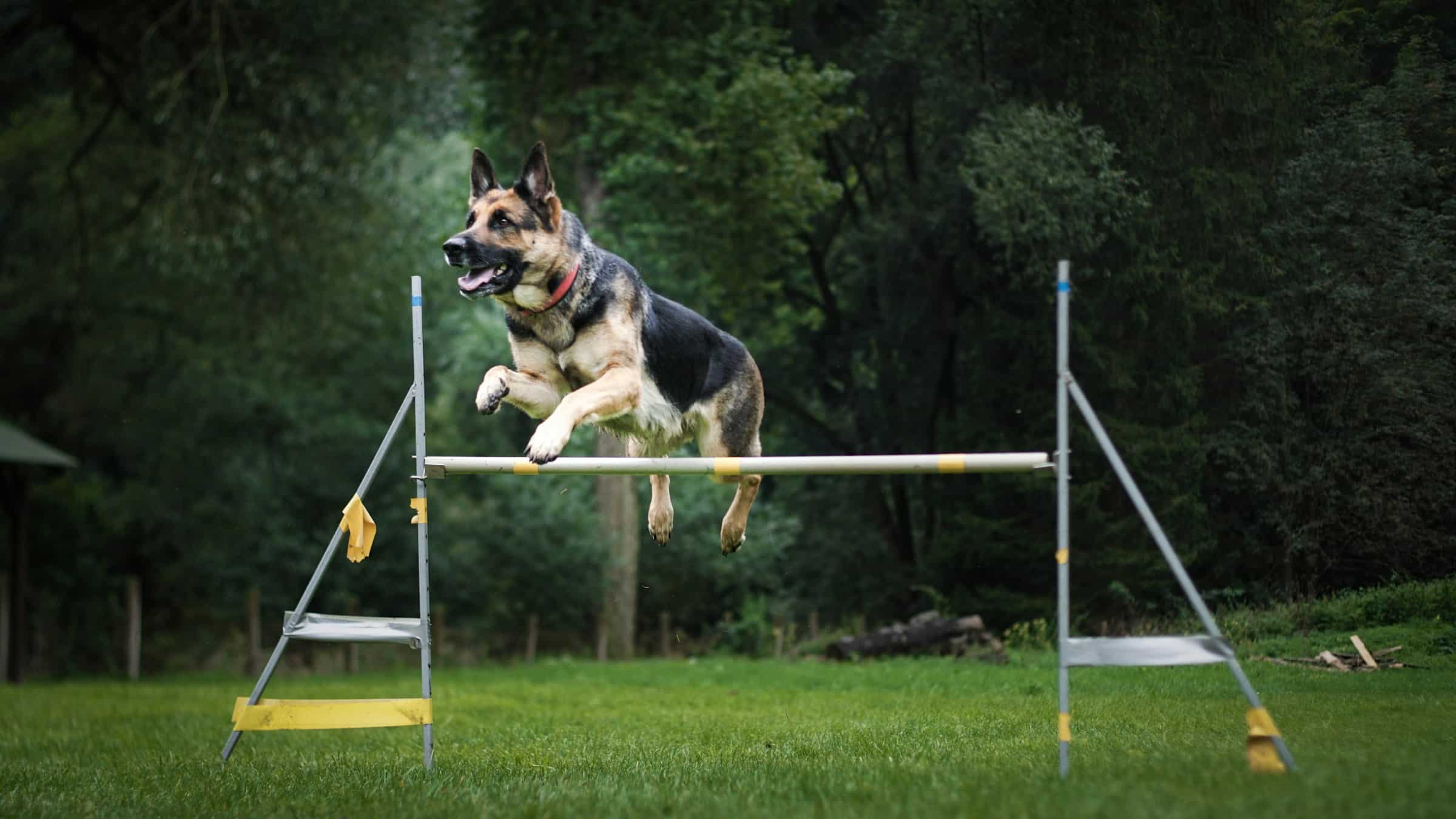Dog agility training is a popular and enjoyable activity that provides both mental and physical exercise for your four-legged friend. It’s not only fun but also an excellent way to enhance the bonding and communication between you and your dog. But like any form of high-intensity training, it can lead to over-exertion if not properly managed.
Knowing the signs of over-exertion in dogs during agility training is critical in preventing injuries and improving their overall performance. In this article, we’ll delve into the various signs of over-exertion, so you can keep an eye out for them during your training sessions.
In parallel : How Can You Train a Parakeet to Perform Complex Tricks Using a Flight Harness?
Recognizing signs of over-exertion
Agility training requires dogs to run, jump, and navigate through various obstacles. It’s high-energy and fast-paced, often pushing your dog’s physical limits. Let’s start with the signs of over-exertion that you should be aware of.
Excessive panting and salivation
While panting is normal for dogs after exercise, if your dog continues to pant heavily after a rest period, it could be a sign of over-exertion. Similarly, excessive salivation can indicate that your dog is pushing their limits too hard.
Also to read : What’s the Best Way to Support a Dog with Chronic Pancreatitis Through Diet?
Changes in behavior or demeanor
Dogs are incredibly resilient, often pushing through discomfort or pain during physical activity. Changes in your dog’s behavior, such as unwillingness to follow commands, slowing down during runs, or showing signs of aggression, may suggest they’re overworked.
Limping or movement difficulties
If your dog starts limping or shows difficulty moving during agility training, it can be a sign of a possible injury due to over-exertion. Stop the training immediately and consult with a vet if you notice such signs.
Preventing Overexertion in Agility Training
Prevention is always better than cure, especially when it comes to the welfare of your dogs. Here’s how you can prevent over-exertion during agility training.
Proper Warm-up and Cool-down
Just like humans, dogs also need a solid warm-up before high-intensity training and a cool-down period after. This will reduce the risk of injury and over-exertion.
Managing Training Time Efficiently
Over-exertion can often be a result of prolonged training periods. It’s essential to manage the duration of training sessions well. Start with short duration sessions and gradually increase the time, ensuring your dog gets ample rest in between.
Regular Veterinary Check-ups
Regular veterinary check-ups are crucial to ensuring your dog is in good health for agility training. A vet will be able to detect any potential issues that might lead to over-exertion or injury.
Enhancing Performance Without Over-exerting
Improving your dog’s performance in agility training doesn’t always mean pushing them to their limits. Here are some ways to enhance performance without over-exerting your dog.
Positive Reinforcement
Positive reinforcement, like treats or praises, can motivate your dog to perform better without causing stress or over-exertion.
Adequate Rest and Nutrition
Just like humans, dogs also need proper rest and nutrition to recover from physical activity. Ensuring your dog gets enough sleep and a balanced diet can help significantly improve their performance.
Variety in Training
Adding variety to your agility training can keep your dog engaged and motivated. It also allows different muscle groups to work, preventing overuse injuries.
When to Unsubscribe from Training or Competitions
There may come a time when you need to consider unsubscribing from agility training or competitions. Here’s what to consider.
Frequent Injuries
If your dog is getting injured frequently during training or competitions, it’s time to reconsider their participation. Regular injuries could indicate that the agility training is too intense for them.
Age or Health Concerns
Older dogs or dogs with health concerns may not be able to handle the intensity of agility training. In such cases, it’s advisable to unsubscribe from such activities.
Lack of Interest
If your dog shows a lack of interest in training or competitions, forcing them to participate could lead to stress and over-exertion.
Dog agility training is a wonderful way to bond with your dog and provide them with mental and physical stimulation. But it’s equally important to ensure their safety and well-being during such activities. By paying attention to the signs of over-exertion, managing training time efficiently, and taking preventive measures, you can enjoy this fun-filled activity without putting your furry friend at risk.
Incorporating Training Emails to Prevent Overexertion
One of the effective ways to prevent overexertion in dog agility training is through the use of training emails. This method involves you, as the dog owner, receiving emails from a professional dog trainer, like Susan Garrett, providing tips, guides, and advice to ensure your dog’s well-being during the training.
These emails serve as a learning tool, offering valuable insights to help you monitor your dog’s behavior, identify signs of stress or fatigue, and modify the training as needed. By providing your email address, you agree to receive messages from Susan Garrett or other professional dog trainers, sharing their expertise on how to manage your dog’s training efficiently.
This method allows you to learn how to tailor your dog’s agility training to their specific needs, preventing overexertion and enhancing their performance. The trainer’s advice can be based on their experience with various dog breeds, age groups, and health conditions, making it a useful resource for all dog owners.
It is essential to remember that your email address will not be shared or sold and is used solely for the purpose of sending you these valuable training emails. You can easily unsubscribe at any time if you feel the information is no longer necessary or beneficial.
Conclusion: Balancing Enjoyment and Safety in Agility Training
Dog agility training can be a fun and rewarding experience for both you and your dog. It promotes mental and physical well-being, enhances bonding, and provides an avenue for them to expend their energy positively. However, as with any physical activity, it is crucial to balance this enjoyment with safety and well-being.
Learning to recognize signs of over-exertion, including excessive panting, changes in behavior, or limping, can go a long way in preventing injuries and ensuring a positive experience. Incorporating routines like proper warm-up and cool-down periods, managing training time efficiently, and maintaining regular veterinary check-ups can significantly reduce the risk of over-exertion.
Additionally, subscribing to training emails can provide valuable insights and advice on how to manage your dog’s training effectively. However, if your dog shows frequent injuries, lacks interest, or is of old age or health concerns, it’s advisable to consider unsubscribing from the agility training or competitions.
In conclusion, the goal is to create a safe and enjoyable environment for your dog with the agility training. By being diligent and putting your furry friend’s safety first, you can enjoy the fun-filled activity of agility training, knowing that your dog is not only having a blast but is also safe and sound. Remember, a healthy dog is a happy dog, and a happy dog makes for a happy owner.












